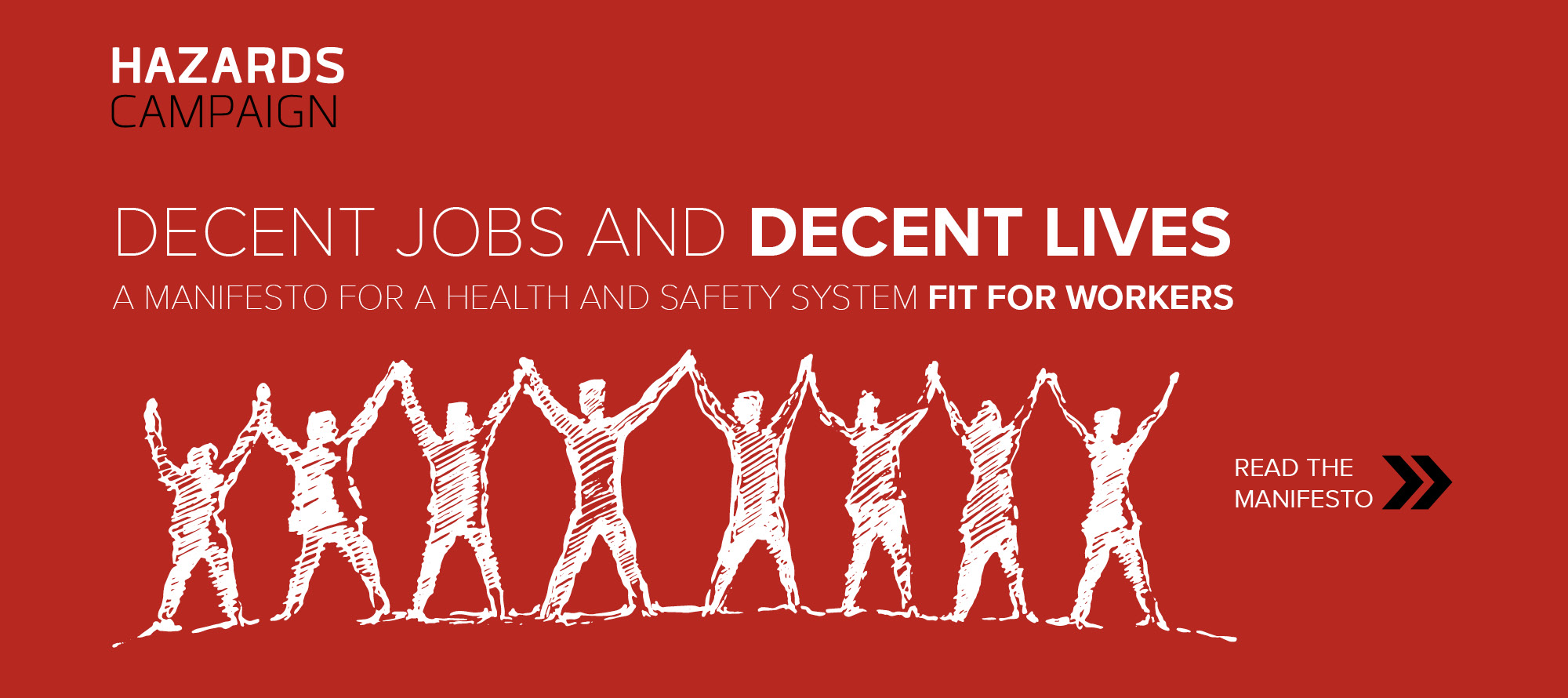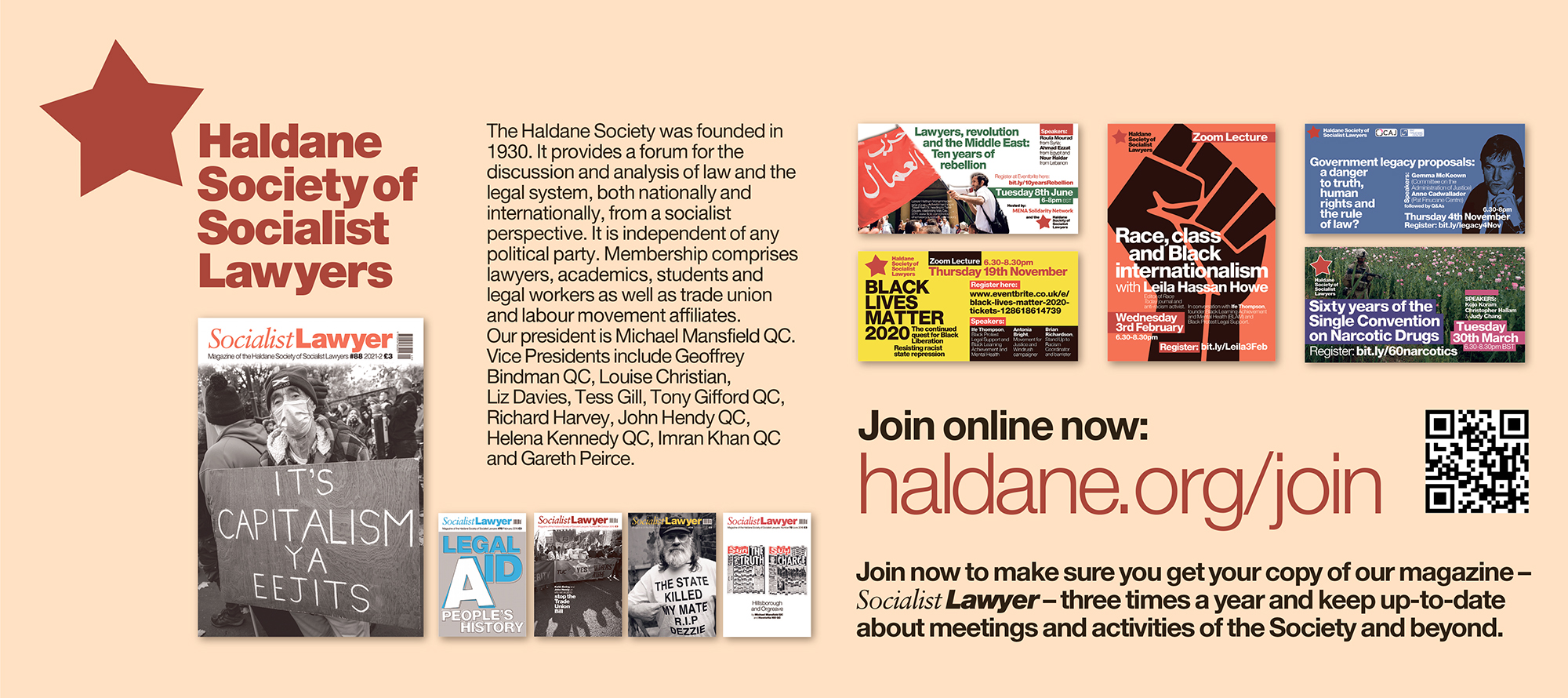Equality and Discrimination: post-election priorities
A diverse panel of speakers delivered talks on a range of topics relating to diversity and equality in the workplace.

About the Conference
by Roger Jeary
The first speaker, Duncan Exley, focused his talk on the use of procurement to promote equality. He began by outlining economic inequality as it exists today. Only Mexico, Israel and USA is doing worse than the UK in the scale of inequality. A recent UK survey showed that people thought that the highest paid person in a company should earn about six time the average. The reality is quite different at 183 times the average. He told the conference that inequality is not just an ethical problem but is also a problem which affects health and social issues.
He went on to explain that inequality weakens the economy by demotivating employees, reduces consumer spending and has an adverse operational impact on organisations. Public attitudes (2013 British Social Attitudes Survey) indicate that the gap between the incomes at top and bottom is too large.
Duncan then turned to one of the issues that can impact on inequality – procurement. The behaviour of employers who bid for contracts can be affected by good procurement practices. Public procurement is enormous and can be a force for good in terms of equality. From a study of local authorities Duncan drew attention to the desire to establish, amongst other things, fair pay. This, he explained, can be established by statements of intent by the procuring authority and by putting their own house in order it allows them to talk to contractors about meeting the same standards. In talking about suppliers and contractors, Duncan told the conference what could be demanded by the procurer. For example he identified matters that can be difficult to impose on contractors such as changes to top pay and bonuses but made clear that there are examples where these and other practices are employed by progressive organisations. These may also include profit sharing, employee role in decision making, limiting the ratio between top and average pay and training and progression plans. But the main thing that can be impacted through procurement conditions is fair pay.
Duncan went on to talk about other factors which can contribute to inequality reduction. Public spending can be directed towards projects which benefit the majority rather than just the wealthy; local industrial policy and policy objectives are also both factors which can impact on inequality. Additionally the ability to create a culture which addresses inequality can be assisted by the creation of equality commissions. By bringing stakeholders, experts and practitioners in to the same room and enabling them to meet directly people experiencing inequality links the impacts with the potential actions. It can, he suggested, create the business case for addressing inequality.
The second speaker was Ijeoma Omambala from Old Square Chambers who addressed the issue of hate speech and non-discrimination. She explained what she meant by hate speech by saying that it demonstrates expression of hatred towards someone on account of that persons colour, race nationality, ethnic or national origin, religion or sexual orientation. That it covers written or oral expression and behaviour. The harmful effects of hate speech has led to legislation in the UK but this has limitations in the workplace and it is increasingly challenging to bring cases to tribunal.
Criminal law also addresses hate speech. Missing from criminal law is disability and transgender as these are not protected by the legislation. Ijeoma explained that the law had devised aggravated offences in terms of assault when these were accompanied by reference to hatred; likewise incitement to hatred is covered by the Public Order Act. But these criminal processes have their problems.
In the criminal justice system there has been lack of empathy for victims of hate speech. Matters are progressing now but the limitations of the law remain. Hate speech covers any communication that is intended to harass, so intent has to be proved. Giving the Public Order Act 1986 as an example, the conditions to be met must include the intention to stir up racial hatred and, having regard to all the circumstances, racial hatred is likely to be stirred up. If an offence is proved a maximum sentence of 7 years imprisonment and/or a fine can be applied. This model has been applied to other protected characteristics. Amendments to the law have added anything that causes alarm or distress to a person. Similar remedies apply but the maximum imprisonment is just 6 months.
She addressed the issue of potential tension between the criminal law and freedom of expression. Legislators have come up with a lengthy provision to cover this point but it is a lawyers paradise whilst difficult for the justice system and people generally to juggle with. The extension of the scope of the hate speech provisions to publishing or distributing written material or the public performance of a play or a recording broadcast has the potential to stifle debate, and to provide those who want to take advantage of the provisions in a way not anticipated. She gave the example of self censorship exercised by the National Youth Theatre this summer in withdrawing a play on Islamism from their repertoire. She pondered the possibility that the law as it exists may inhibit freedom of expression. This tension she felt would become more vivid over time as public policy seeks to address these issues and establish a moderating principle which recognises the respect of all.
She alerted conference to those who regard hate speech as a part of free speech and issued a challenge as to how to respond to that sort of approach. Ijeoma asserted that we should be aspiring to live in a community where we look at another person and we see another human being. She told conference that there was still much to be done and not to lose what had already been achieved.
The Q&A session that followed raised a number of interesting points on hate speech in particular and illustrated the need for this issue to be seriously debated. Similarly the debate on inequality prompted questions on how public views had changed and the issues that have prompted this.
Next up was Sally Brett, Senior Equality Policy Officer at the TUC. Sally posed the question of can we end the motherhood penalty in the workplace. She stated that the the answer to this question under the current government was quite clearly no! However, she went on to tell conference that the recent EHRC research on the issue of working mothers found that 54,000 women a year are dismissed, made redundant when no one else is or are treated so badly they feel forced to leave. It also found that 100,000 mothers a year experience harassment or negative comments linked to pregnancy or flexible working and most deplorable was the fact 53,000 pregnant women a year are discouraged from attending ante-natal appointments.
Sally went on to identify a core problem in dealing with this issue despite legislation which has been in existence for some 40 years. Only one in five women actually complained to their employer on this issue. Generally high earners were more likely to complain and recent ACAS figures showed only 1851 women notified them of a potential pregnancy related detriment or dismissal claim and only 790 women actually went to tribunal despite the figures produced by the EHRC Survey.
She suggested that the changes needed to address the issue would include abolition of tribunal fees, extension of time limits to 6-12 months from the current 3 months; also more support is needed through advice centres and trade unions. Also the wider recommendation powers of tribunals need to be reintroduced and employers need to be held accountable by for example by publishing return to work rates.
A further impact is that women face questions about intentions to have children which men would never face. Also women who have children earn 11% less than women who hadn’t had children by their late 30’s whereas fathers earned 19% more than men who hadn’t had children by their late 30’s. Mothers also earned 26% less than fathers in their late 30’s.
Father’s leave is restricted by limited on amounts of paternity leave equal to a quarter of the weekly median wage, 146,000 working dads don’t qualify for this leave due to their employment service or status. Only half of dads take full leave mainly because they can’t afford to. Sally asserted that the statistics showed that the provisions of shared parental leave has not addressed these problems.
Sally pointed to other countries, specifically Nordic states, and the generous provisions that they have compared to the UK. This illustrated how far the UK had to go in this field. She suggested that things that need to change now is making paternity leave a day-one employment right; introduction of specific leave for fathers; introduction of a paternity allowance for those who fail to qualify for statutory paternity leave; and improvement of statutory pay rates. The introduction of grandparents being part of shared parental leaves, Sally felt, would potentially lead to grandmothers picking up the female role and further limiting the uptake of fathers taking leave. She went on to draw attention to the difficulties of balancing the care responsibilities and paid work. In this area Sally called for the need to promote flexible work at recruitment; for managers to manage flexibility by adapting workload and redesigning jobs and for more secure employment and adequate notice of working hours.
The final speaker before lunch was Rakesh Patel of Thompsons Solicitors who spoke about race, religion and belief discrimination. He started by illustrating the decline in tribunal cases since 2010 in cases overall but not specifically in these areas.
Turning to the issue of race discrimination he highlighted the difficulties in meeting the definition of “direct discrimination”. He reminded conference that courts have determined a much wider definition of race to include reference to colour, nationality and ethnic and national origins. On the issue of “caste” the courts have determined that this does come within the definition of “ethnic origin”. On the definition of religion or belief, this covers non believers as well and the definition of belief has to be based on belief not opinion. The belief has to be serious and worthy of respect in society. On the issue of whether treatment of non-British migrant workers amounted to direct discrimination the courts have determined that there is no exact correspondence between their treatment as migrants and their nationality. This point is being appealed to the Supreme Court.
Rakesh told the conference that on the burden of proof this starts with the claimant then shifts to the respondent who has to provide an adequate explanation for their actions. Turning to indirect discrimination he explained the definition as being the application of a provision or practice which is discriminatory in relation to a relevant protected characteristic and which puts the individual at a disadvantage and cannot be shown to be a proportionate means of achieving a legitimate aim.
Recognising the potential of conflicting rights in religious belief, Rakesh quoted a judgement in McFarlane v Relate Avon Ltd [2010] IRLR 872 where the court stated that the law must firmly safeguard the right to hold and express religious belief; equally it must eschew any protection of such a belief’s content in the name only of its regions credentials. He referred to other interesting cases to illustrate the concepts of harassment and victimisation in the context of discrimination law. Victimisation is where someone suffers detriment as a result of a protected act or believes they may be subject to a protected act.
Finally, Rakesh turned to remedies and alluded to the relative low awards. The median award for race cases was just £8,025 and for religion or belief claims just £1,080. In conclusion he thought that the current legislation was not necessarily fit for purpose. Europe was not always the answer and he felt trade unions needed to put the issues onto their collective bargaining agenda to achieve real progress in the workplace.
The first speaker after lunch was Spencer Keen of Old Square Chambers who looked at recent developments in disability discrimination. He began by identifying three issues which he believes are likely to be the areas of greatest dispute over the next few years. First whether disability is defined by its cause or its effect; second who is the correct comparator in a reasonable adjustment case and third, when does unfavourable treatment arise in consequence of disability.
In dealing with meaning of disability, Spencer told conference that this meant a person had physical or mental impairment that has a substantial or long term impact on the individual’s ability to carry out day-to-day activities.
The act contemplates that impairment can be either as a result from an illness or the illness itself.
In Europe, case law has determined that it would be counter to the aim of the directive to define its scope by reference to the origin of the disability. Spencer referred to a case at the CJEU in which a Danish worker claimed he was dismissed because of his obesity. The CJEU decision identified disability in a similar manner to how the UK would define and repeated the definition above. It also stated that the outcome was not dependent on the contribution the claimant may or may not have contributed to the onset of the disability.
Spencer then explained that these cases shows that obesity in itself is not a disability but it is the effect of that on the person. Cause is not irrelevant but has to be considered in context of the case and whether the discrimination is direct or indirect. Trade unions need to consider when dealing with such cases beyond the traditional definition of disability.
Turning to the comparator in reasonable adjustment cases, Spencer told the conference this is where an employer applies a condition or practice and puts a disabled person at a disadvantage in comparison with someone who is not disabled.
The choice of comparator is crucial as it will determine whether the RA duty arises. It is essential to work through the statutory test in determining who the comparator is. Clearly this can be a complex determination which Spencer illustrated by a hypothetical case. He then went on to illustrate through actual cases the impact of the various choices of comparators.
He went on to tell the conference that the comparison exercise in RA cases may be about to change as a result of a Court of Appeal reference in the case of Griffiths v Secretary of State for Work or Pensions (2013).
In reference to discrimination arising in consequence of disability two questions arise – what is unfavourable treatment? and what does arising in consequence of disability mean?
In defining unfavourable treatment Spencer referred to a case of ill health pension reduced due to a person working less hours due to a disability. EAT found that unfavourable treatment didn’t apply where an adjustment is insufficiently advantageous – the case is subject to appeal.
On the second question – When does something arise in consequence of disability – Spencer referred to the case of Hall v Chief constable of West Yorkshire Police in which the employer was found not to have discriminated as they believed the employee was falsely claiming to be sick. The ET found against the employee but the EAT overturned the decision because the person was off on sick leave and the treatment arose as consequence of disability and the ET had confused the causation with the background circumstances of situation.
Laura Prince of Matrix Chambers spoke next on gender discrimination and covered a broad range of the recent developments in the law of gender discrimination. She explained the history of the current provisions covering sex discrimination and equal pay over the past 40 years. She emphasised the difficulties of identifying a comparator, real or hypothetical, and illustrated the problems of actual comparators through actual cases and why in many cases hypothetical comparators are used. She pointed out that hypothetical comparator has to be appropriate with similar circumstances.
Turning to indirect discrimination, Laura referred to the provisions of the Act but pointed to the Chez Case in Bulgaria (2015) as bringing a different dimension of indirect discrimination by association. The impact of this decision, she asserted, was potentially very significant. If indirect discrimination by association is covered then UK law will be inconsistent with EU law and consequently UK courts may have to give effect to EU law which would mean the need to dis-apply UK legislation.
Next Laura referred to equal pay and made the point that protests on this issue stretched back over centuries. Why has this not been resolved by legislation she asked? She suggested that contributing factors were that the law is overly complicated and in the absence of transparency on pay claims are difficult to progress. Laura referred specifically to gender pay gap reporting and despite voluntary provisions only 5 companies actually delivered, so we now await new legislation to determine what employers are going to be required to provide.
The final speaker was Aileen McColgan of Matrix Chambers who projected forward to ask the question – where will equality be in 5 years time? She told the conference that the outcome of the EU referendum would play a major part in determining where equality will going in the next 5 years. She said it was also important to determine between the legal position and reality.
Aileen firstly made an assumption that the UK would still be in EU in 2020 and accepted that the UK equality legislation is largely fit for purpose and compares favourably with other nations. However, the public sector equality duty is more of a problem with its future less certain, including the possibility of its abolition following a review due in 2016. Equally uncertain is the future of the Human Rights Act.
The Equality Acts of 2006 and 2010 are comprehensive, harmonising and reasonably clear. But even under the Coalition Government the Tories had refused to bring into effect parts of the 2010 Act and had implemented changes to enforcement procedures that have seriously undermined the ability to enforce the provisions of the Act. This had to be viewed in the context of their total vandalism of the EHRC by slashing its funding.
Secondly, Aileen outlined the picture in the event of the UK leaving the European Union. Everything may be up for grabs but it was unlikely the Equality Act would be repealed but currently the EU law currently underpins it and this would be lost. It is not just equality laws but the legislation which currently protects disadvantaged – part time workers, agency workers and the removal of the EHRC are all potentially under threat.
Aileen told the conference that if the UK came out of the EU, the reality was increased insecurity and poor employment protection coupled with a further shackling of trade unions. Further and deeper benefit cuts and decimation of local authority services – thus further exacerbating inequality.
In winding up the day’s conference, Chair Siobhan Endean, thanked all the speakers and despite the gloomy future the one shining light was that the labour movement now had a leader who understood the issues and would be prepared to defend them.
Speakers
Chairs: Siobhan Endean and Harrish Patel, Equality National Officers at Unite.
Duncan Exley, The Equality Trust
Using procurement to tackle economic inequality.
Ijeoma Omambala, Old Square Chambers
Hate speech and non-discrimination.
Sally Brett, TUC Senior Equality Policy Officer
Can we end the motherhood penalty in the workplace?
Rakesh Patel, Thompsons Solicitors
Race, religion and belief discrimination.
Spencer Keen, Old Square Chambers
Disability discrimination: Recent development.
Laura Prince, Matrix Chambers
Gender discrimination (Powerpoint).
Gender discrimination (Paper).
Aileen McColgan, Matrix Chambers
Where will equality be in 5 years time?




